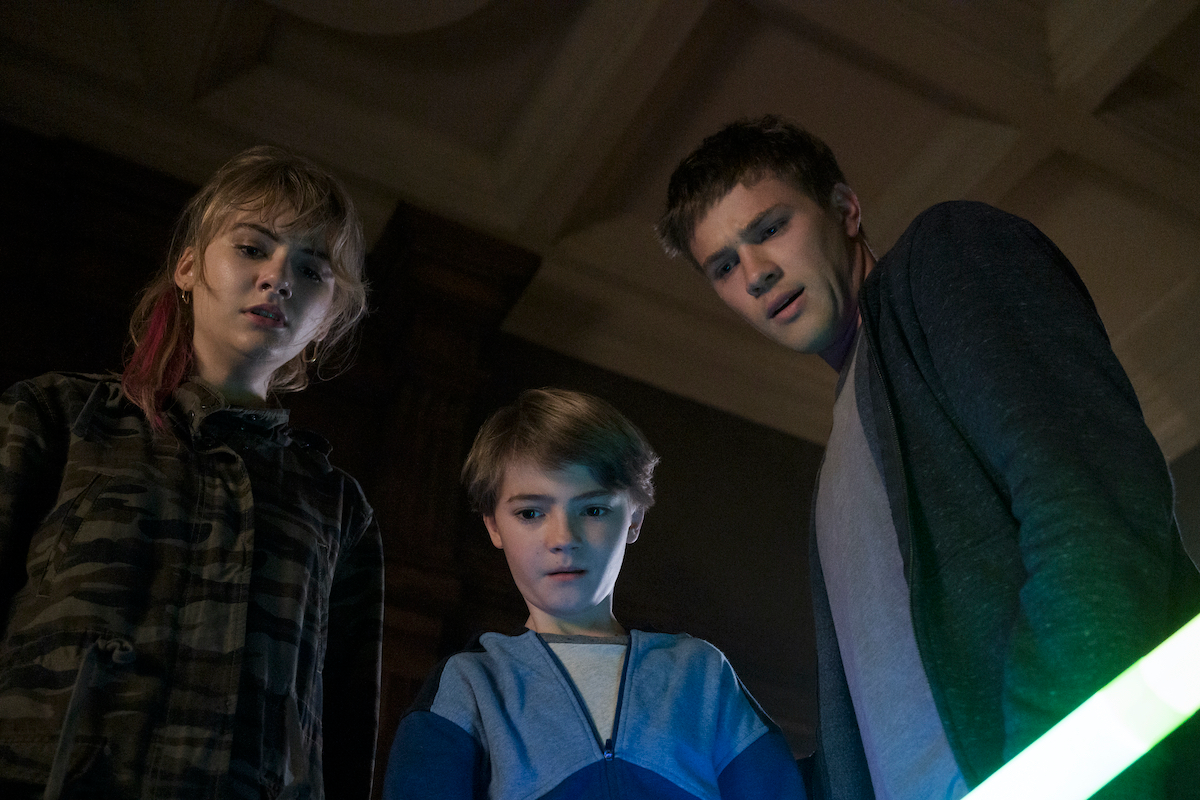Joe Hill and Gabriel Rodríguez’s 2008 comic Locke & Key opens with a gory scene. The book begins with the murder of Rendell Locke and the first issue alternates between that terrifying event and its emotional aftermath. We see the Locke family grieving through Rendell’s funeral and the decision of his widow Nina to move their three children across the country, all while periodically flashing back to the gruesome murder, just to really drive home the trauma of it all.
The new Netflix adaptation of Locke & Key is far less explicit in its gore. Overall, the show—written and produced by Carlton Cuse (Lost, Bates Motel), Meredith Averill (The Haunting of Hill House), and Aron Eli Coleite (Heroes)—feels geared toward a younger audience than its source material, toning down the violence and the horror and leaning into the more fantastical elements. The result is more Chilling Adventures of Sabrina than Stephen King—the heart of the comics is still there in its themes of trauma and loss and self-exploration, but with a slightly lighter hand and a spooky undercurrent running throughout.
After Rendell’s death, Nina (Darby Stanchfield) and the three kids—Bode (Jackson Robert Scott), Kinsey (Emilia Jones), and Tyler (Connor Jessup)—move into Keyhouse, the Locke family’s sprawling, mysterious estate. As his mother buries her grief in home renovations and his siblings adjust to their new high school, the youngest Locke child, Bode, navigates the house’s secrets. First, there are the magical keys that unlock various powers. Then there’s the strange woman trapped in a well on the property trying to escape and collect those keys. The house has a lot going on.
The first episode or two, then, are mostly centered around Bode, although the show does eventually even out and each sibling, as well as Nina, gets a full arc exploring their own relationship with the house and its magic. And while I like Bode as a character, the show definitely picks up steam when it starts to spread its attention over the rest of its cast.
The top of the show is also really reference-heavy. Keyhouse is the town of Matheson, as in fantasy/sci-fi/horror legend Richard Matheson (it was Lovecraft in the comics, and the change really reflects the tonal differences), and Bode’s exploration of the house is basically one long homage to The Shining (which is a pretty meta tribute, as King is Joe Hill’s father).
The references were cute, but I was glad to see them subside early on because the show itself is more than enough to stand on its own, even if it didn’t always seem to know where it was going. There’s so much mystery and intrigue laid out over the course of ten episodes and way too much of it is allowed to pile up, left for a severely overloaded final episode, full of a season’s worth of twists and big reveals.
Still, I hope we get a second season. The first season was a lot of fun (super dark fun) and it would be nice to see where it goes once it really gets its footing. I’ve only read the first arc of the comic and while the show goes far beyond that and takes a lot of liberties in rearranging the chronology of the books, I imagine there’s still a lot of material to play with, as well as a solid foundation for new ideas.
Want more stories like this? Become a subscriber and support the site!
—The Mary Sue has a strict comment policy that forbids, but is not limited to, personal insults toward anyone, hate speech, and trolling.—










Published: Feb 11, 2020 11:29 am